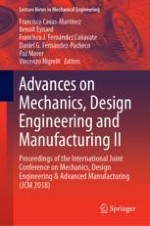2019 | OriginalPaper | Chapter
The Influence of Build Orientation on the Flatness Error in Artifact Produced by Direct Metal Laser Sintering (DMLS) Process
Authors : S. Rizzuti, L. De Napoli, S. Ventra
Published in: Advances on Mechanics, Design Engineering and Manufacturing II
Publisher: Springer International Publishing
Activate our intelligent search to find suitable subject content or patents.
Select sections of text to find matching patents with Artificial Intelligence. powered by
Select sections of text to find additional relevant content using AI-assisted search. powered by
